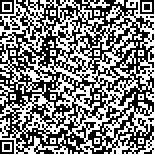Archive > Volume 41 Issue 3 > 2015,41(3):296-303. DOI:10.7519/j.issn.1000-0526.2015.03.004 Prev Next
An Approach for Radar Quantitative Precipitation Estimate Based on Z-I Relations Varying with Time and Space
- Article
- Figures
- Metrics
- Preview PDF
- Reference
- Related
- Cited by
- Materials
Abstract:
Minutely rain data from the regional Automatic Weather Stations (AWSs) and composite reflectivity, the five lower angles radar reflectivity from Shijiazhuang radar second products are used to estimate radar based quantitative precipitation. Twenty nine rain processes in 2009-2012 are selected. According to the principle of the most similar intensity to radar echoes and the nearest distance to the AWSs, a new approach for radar quantitative precipitation estimate based on dynamic Z I relations varying with time and space is presented. Grid precipitation without observation is calculated from radar echo reflectivity using this method. A series of quantitative assessments ensure the quality of radar based precipitation estimates. Horizontal distribution of the hourly estimated rainfall data has been visually vertified against the corresponding AWS rainfall reports. Cross validation is used to analyze the errors. The results show high quality of the radar based precipitation estimates in terms of small errors, high correlation and hourly rainfall pattern and evolution, including rainfall extremes more than 40 mm·h-1. Therefore, the approach of dynamic Z I relations is shown valuable to be applied in meteorological operation and instructive for assessing severe rainfall disaster.
Keywords:
Project Supported:
Clc Number:


Mobile website









